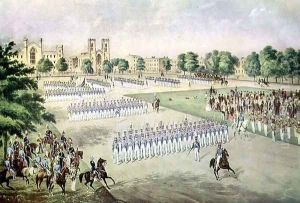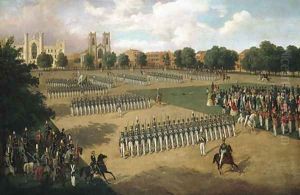Otto Botticher Paintings
Otto Bötticher, born in 1824 in Germany, was a 19th-century artist known primarily for his contributions to lithography, a form of printmaking that was revolutionary during his time. While not as widely recognized as some of his contemporaries, Bötticher's work provides a fascinating insight into the artistic and cultural movements of the 19th century, particularly in Germany and the United States, where he spent a significant portion of his career. His early life was marked by an immersion in the arts, studying under established artists and quickly adopting the lithographic techniques that were gaining popularity.
Bötticher's career spanned a period of significant transformation in the art world, with the advent of new technologies and the shifting tastes of the European and American public. After honing his skills in Germany, he moved to the United States in the mid-19th century, a period that saw a burgeoning demand for lithographic prints. These prints, which could be produced more quickly and inexpensively than traditional oil paintings, were sought after for their ability to capture the spirit of the rapidly changing landscapes and urban scenes of the era. Bötticher capitalized on this demand, creating works that depicted significant historical events, portraits of prominent figures, and scenes of everyday life with a level of detail and realism that was highly valued at the time.
Throughout his career, Bötticher remained deeply engaged with the communities of artists and innovators who were pushing the boundaries of printmaking. His contributions to the field of lithography were not limited to his own creations; he was also involved in the development of new techniques and materials that would further the capabilities of lithographic art. Despite the technological advancements of the era, Bötticher maintained a commitment to the craftsmanship and artistic integrity that characterized his work from the beginning.
Otto Bötticher passed away in 1901, leaving behind a legacy that, while perhaps not as celebrated as some of his peers, offers a unique window into the complexities of 19th-century art. His work reflects the intersections of tradition and innovation, capturing the essence of a world in transition with a precision and depth that continues to be appreciated by art historians and collectors today.

